News
Mark Leno poised to be first openly gay mayor of San Francisco
SF mayoral race had included Supervisor Jane Kim and former Supervisor Angela Alioto
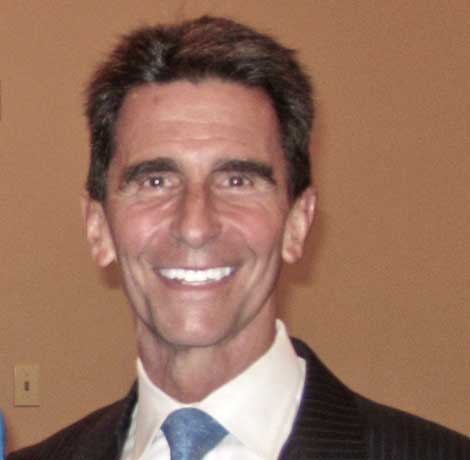
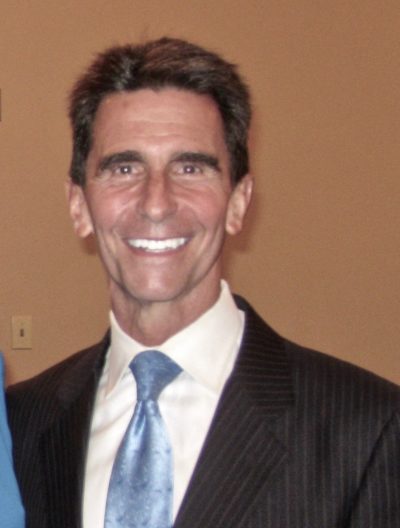
Mark Leno
A hotly contested election race in San Francisco is still too close to call between Board of Supervisors president London Breed and former state Senator Mark Leno to become the city’s 45th chief executive. The race was prompted by the unexpected death of Mayor Ed Lee December 12, 2017.
Officials with San Francisco’s Department of Elections told the Los Angeles Blade Wednesday afternoon that the department is still processing roughly 88,000 thousand ballots, a number that may tip the scales in deciding the city’s next mayor.
NBC Bay Area reported initial results from Tuesday’s election indicated a large margin in first-place votes for Breed. However, once San Francisco’s ranked-choice voting system was taken into account with voters selecting their top three choices, Leno took the lead early Wednesday morning with 50.42 percent of the vote compared to 49.58 percent for Breed.
The city’s mayoral race had several high-profile candidates, including Supervisor Jane Kim and former Supervisor Angela Alioto.
Leno, a Democrat, was the first openly gay man elected to the California State Senate and also was a member of the California Legislative LGBT Caucus. He served until November 2016 representing the 11th State Senate district, which includes San Francisco and portions of San Mateo County. Prior to his election to the Senate, he served as a member of California’s State Assembly.
A longtime resident of San Francisco, Leno served as a member of San Francisco’s Board of Supervisors from 1998 until 2002 upon to his election to the State Assembly. In 2004, he authored the state’s first marriage equality bill, with support from Geoff Kors at Equality California and Kate Kendell of the National Center for Lesbian Rights.
Reporting by the staff of the Los Angeles Blade, NBC Bay Area, & wire service reports.
Colombia
Luto en Antioquia y Colombia: asesinan a la activista trans y politóloga Victoria Strauss
Su ausencia deja un vacío enorme
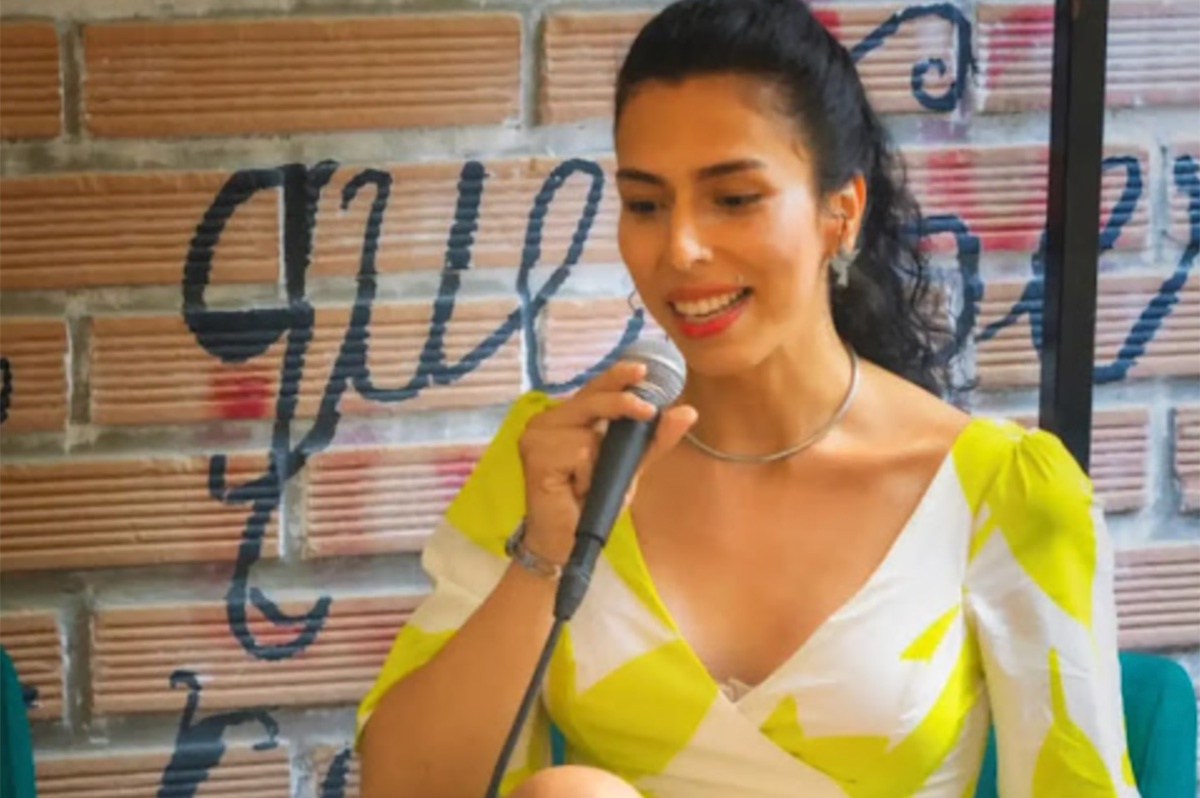
La comunidad LGBTQ+ en Colombia está de luto tras conocerse el fallecimiento de Victoria Strauss, reconocida politóloga egresada de la Universidad de Antioquia, activista trans y defensora de los derechos humanos, quien además se desempeñaba como docente universitaria.
Victoria fue hallada sin vida este lunes en Santa Elena, Antioquia, después de haber sido reportada como desaparecida el 29 de septiembre. La noticia ha generado una profunda conmoción entre sus colegas, amistades y los movimientos sociales que la conocieron por su compromiso incansable en la defensa de la diversidad y la igualdad.
Un legado que no morirá
El trabajo de Strauss se consolidó como un pilar del activismo trans en Antioquia, inspirando a nuevas generaciones de liderazgos y abriendo caminos en la academia y en los espacios de participación social y política. Su ausencia deja un vacío enorme, pero también un legado que seguirá marcando la lucha por los derechos de la población LGBTQ+.
Desde OrgulloLGBT.co expresamos nuestra solidaridad con su familia, amistades y con todos los sectores de la sociedad que hoy sienten su partida. Exigimos a las autoridades que se investiguen de manera urgente las circunstancias de su muerte y que se esclarezca si existieron negligencias en la atención y búsqueda.
Hoy despedimos a una gran lideresa trans, cuya voz no se apagará y cuyo legado seguirá vivo en cada lucha por la igualdad.
West Hollywood
West Hollywood officially welcomes a new transitional housing program
The Holloway Interim Housing Program provides 20 rooms for chronically unhoused individuals
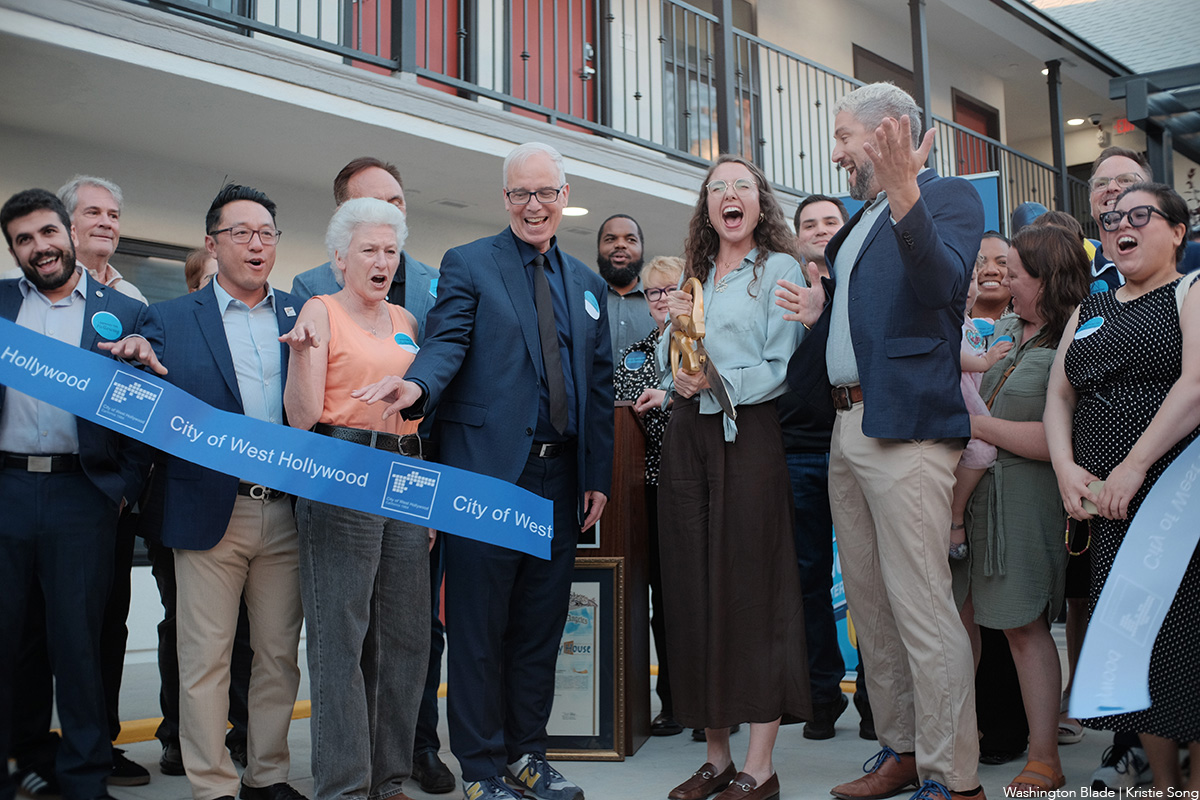
On Tuesday evening, hearty crowds mingled in the courtyard of the old Holloway Motel, buzzing with excitement as West Hollywood mayor Chelsea Byers took the podium. All gathered for the ribbon-cutting ceremony and an open house preview of the Holloway Interim Housing Program, the city of West Hollywood’s latest step in its five-year plan to address chronic homelessness.
In 2022, West Hollywood received a Homekey grant of $6 million from the California Department of Housing and Community Development and purchased the property at Holloway Drive the following year, with plans to revitalize the space into a supportive facility for unhoused community members. After years of development, the Holloway Interim Housing Program is ready to open. The city is partnering with Ascencia, a nonprofit that provides services to unhoused individuals and families, which will manage daily operations at the facility and provide direct support to residents.
“This program is not just short-term housing. It’s a stepping stone towards housing, health, and stability for the long haul,” said Byers, addressing attendees. “This project is what happens when a city puts its values into action. The Holloway is a safe haven and a second chance. It’s a promise kept.” Wielding large golden scissors, Byers cut the ribbon to signal the start of the program, smiling elatedly while surrounded by fellow councilmembers and staff.
The Holloway Interim Housing Program holds 20 private rooms, and residents will be allowed to stay for up to 90 days. As of now, program participants have to be referred by local homelessness service providers and outreach teams to be able to stay at the premises. During this time, they are connected with case managers and will receive counseling and support on healthcare, employment readiness, and pathways into securing permanent housing. Meals will be provided, and community spaces will also be available for residents to engage in workshops, recovery groups, and other communal programming together.
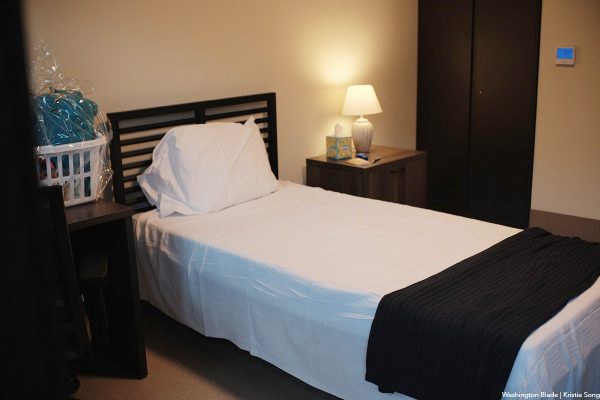
“We have communities that basically respond to the homeless crisis by moving the problem to someplace else,” said California Assemblymember Rick Chavez Zbur, who was also present at the ceremony and open house. “Really, without transitional supportive housing, we don’t provide opportunities for people to move into long-term housing, and that is a key part of the building block that is underfunded and under-invested in.”
When will the program officially welcome its first group of residents? This upcoming Monday, on Oct. 6th, Ascencia Director of Programs Marcell Mitchell told the Blade. Mitchell also explained that Ascencia hopes to keep the program at full capacity. When residents are leaving, someone else from their waiting list will be contacted to fill the space. “We’re ready to get going. We’re ready to start helping people,” Mitchell continued. “It’s definitely a good first step forward. We’ll be able to help people in the community where they’re at, get them going, and get them back to their normal lives.”
California
Congress members, public health organizations urge Governor Newsom to sign bill amidst threats to PrEP access
Two letters have been sent to the governor, calling on him to sign AB 554 into law by October 12th
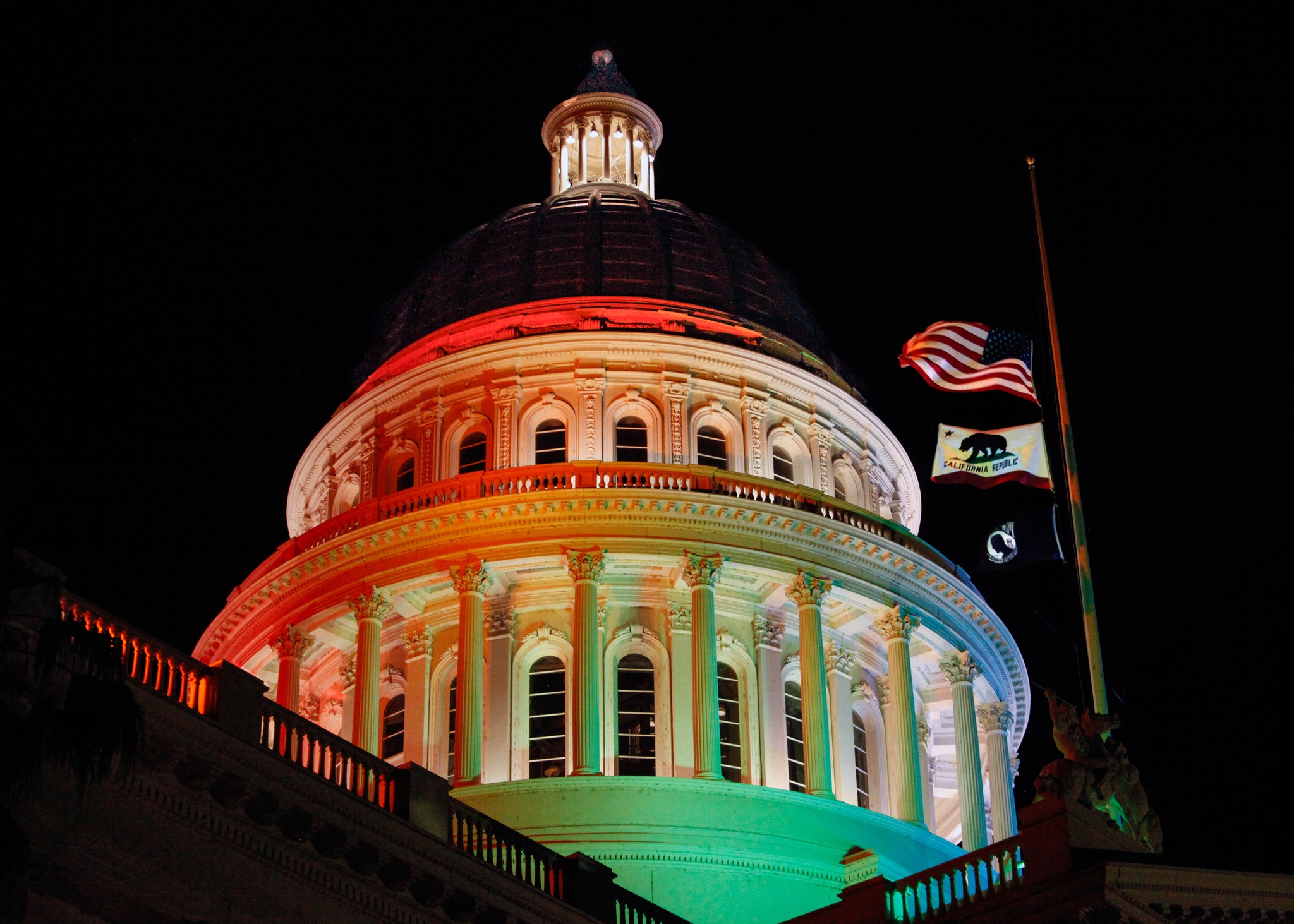
On September 24th, 13 Congress members penned a letter to the governor, asking him to sign AB 554 — or the PrEPARE Act of 2025 — into law. If passed, the bill would strengthen existing state laws around health insurance coverage and access to preventative medication for individuals affected by HIV/AIDS.
AB 554 would require health plans and insurers to cover all FDA-approved PrEP medications, including injectable forms, without prior authorization or step therapy. The bill’s co-authors and supporters emphasize the need to bolster support for impacted individuals and communities, ensuring that they can access effective treatment plans with as few systemic barriers as possible. The bill also includes protections for community clinics, so that they are reimbursed promptly and able to provide medication for impacted people.
In this letter, co-signed by local elected officials including District 42 Representative Robert Garcia, District 43 Representative Maxine Waters, and District 34 Representative Jimmy Gomez, the coalition of Congress members cites a number of reasons for this call to action.
Namely, they state that the Department of Health and Human Services Secretary Robert F. Kennedy, Jr.’s reported desire to oust all members of the U.S. Preventive Services Task Force — an independent panel of disease prevention experts that provides recommendations to insurance companies, doctors, and other health professionals — is a move that “risks reversing decades of progress in the fight against HIV, one of the most devastating epidemics in history.”
They also write in the letter that insurance cost-sharing restrictions are especially harmful towards Black and Latine communities, who “accounted for over 70% of new HIV diagnoses [in the state] yet remain significantly underrepresented among PrEP users compared to their White counterparts.”
In a separate letter addressed on September 25th, over 90 advocacy groups and public health organizations similarly stressed the importance of AB 554 to the governor. Here, they discussed CVS Health’s decision to not approve coverage for Yeztugo, the first twice-yearly injectable PrEP medication, even though it was approved by the FDA in June.
The organizations that have signed on include LGBTQ+ civil rights organization Equality California, as well as resource outreach groups such as the AIDS Healthcare Foundation and the California LGBTQ Health & Human Services Network. They write that CVS’s “dangerous decision underscores the urgent need for additional clarity in state law to ensure that all FDA-approved PrEP medications are covered without cost-sharing, guaranteeing that lifesaving innovations are available to Californians without delay.”
The letters highlight a need to address equity and accessibility for those impacted by HIV/AIDS, specifically those who belong to marginalized communities. AB 554 received a majority vote of support by both the California State Assembly and Senate on September 10th, and now waits in limbo for Governor Newsom’s signature. He has until October 12th to sign or veto the bill.
In the meantime, Equality California encourages community members to visit their website to learn more about the bill, other pending LGBTQ+ state legislation, and how they can support these movements.
Los Angeles County
New direct cash program aims to prevent youth homelessness in Los Angeles County
CASH LA launches as the first youth-focused direct cash assistance program in Los Angeles to prevent homelessness among LGBTQ+ young people and youth of color.
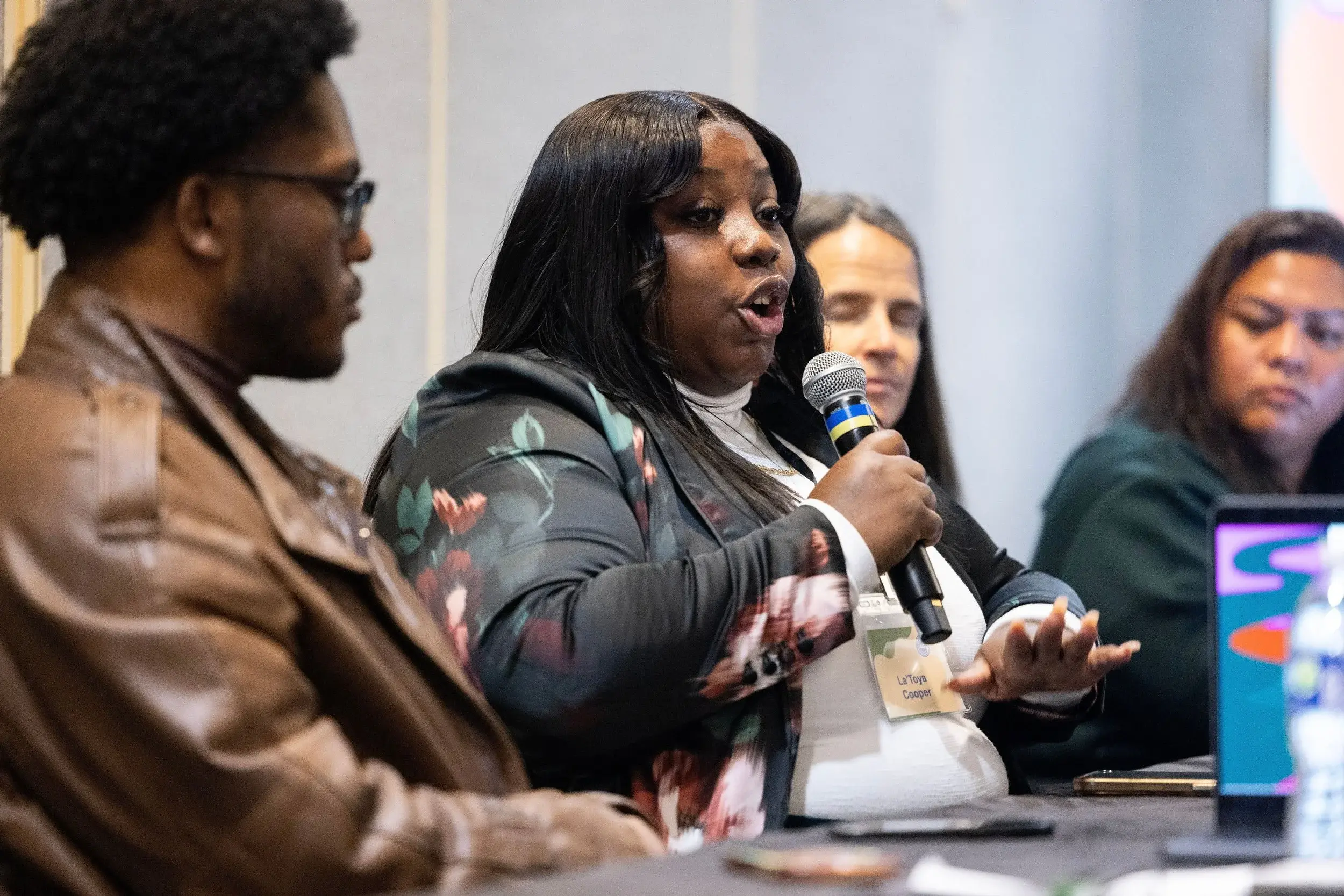
A new pilot program called CASH LA has launched in Los Angeles County, offering direct financial assistance to young people at imminent risk of homelessness. The initiative is a partnership between Point Source Youth, LA Emissary, and AMAAD Institute, with support from Cedars-Sinai and the Conrad N. Hilton Foundation.
Unlike traditional homelessness prevention programs that often focus on eviction cases or families, CASH LA takes a youth-centered approach designed specifically for people ages 18 to 30 who are on the verge of losing housing but are not yet unhoused. Participants create a personalized housing action plan with a trained provider and receive direct cash assistance to carry it out.
In a joint Q&A with the Los Angeles Blade, representatives from Point Source Youth, LA Emissary, and LA Emissary’s Young Adult Pooled Fund, including Larry Cohen, Leanndra Martinez, and Abby Gibson, shared their perspectives on the program. Organizers said CASH LA is the first program in Los Angeles to provide direct cash assistance to young people at imminent risk of homelessness while funding a personalized housing action plan. “Other programs have many requirements, are slow to implement, and youth, and especially LGBTQ identifying youth, do not access them,” they added.
For LGBTQ+ youth and youth of color, who experience homelessness at disproportionately high rates, CASH LA is designed to provide flexible support that meets their urgent needs. Organizers explained that the program “uniquely centers, responds, and funds what LGBTQ youth, youth of color, and LGBTQ youth of color need directly” while also addressing systemic barriers such as homophobia, transphobia, and the lack of affordable housing. “CASH LA gives young people the funds to be able to stay in their housing and allows them to utilize the funds for their identified needs,” they added.
Youth leadership is also embedded throughout the program. Members of the LA Emissary’s Young Adult Pooled Fund helped design and fund the initiative, from drafting proposals to selecting partners. “From start to finish, young adults are involved in every step,” organizers explained. “They decided to invest in direct cash transfers and collaborated with Point Source Youth to develop the RFP, review the proposals, and make decisions about which organization to fund.”
Direct cash transfers are at the heart of the model. Organizers said the approach works because it removes barriers and provides immediate resources for urgent housing crises. “If a young person is in a crisis that is going to lead to them experiencing homelessness, resourcing them to get out of that crisis with cash and support is what works,” they said. “Young people use the cash for housing, back rent, food, transportation, and the things they need to not enter the homeless system in the first place.”
The program’s impact will be tracked through surveys and data collection in partnership with Johns Hopkins University, measuring housing stability, financial well-being, and overall health. Early results from similar efforts in other states suggest high success rates. “Studies indicate that, with an average of 90 percent of respondents reporting they have achieved stable housing in the first 30 days, and looking at the Central Diversion Fund, that rate was over 90 percent in 12 months,” organizers said.
Critics of direct cash programs sometimes question whether youth will spend the money responsibly. Organizers rejected that notion, pointing to consistent research and outcomes. “When we trust young people to know what they need and then meet them where they are with the right support, we can prevent homelessness before it starts,” they said. “Young people use the resources responsibly, as part of their housing action plan, they work with a prevention specialist, and then, 90 percent of them do not enter the homelessness system. And it is cost-effective. What other programs can say that?”
As the pilot rolls out in Los Angeles, Point Source Youth is also working with funders to expand direct cash programs in ten communities nationwide. Locally, CASH LA is continuing to enroll participants until funds are fully distributed, with hopes that evidence from this pilot will pave the way for long-term investment.
“The most powerful lesson we have learned from youth is that we need more dedicated and flexible resources for young people,” organizers said. “We need to make sure all LGBTQ youth at risk of homelessness in LA have access to a program to effectively prevent them from experiencing homelessness in the first place.”
West Hollywood
West Hollywood’s Red Dress Day: a cocktail of queer euphoria, dance, and discontent
An organizer said it was “like pulling teeth” trying to raise funds
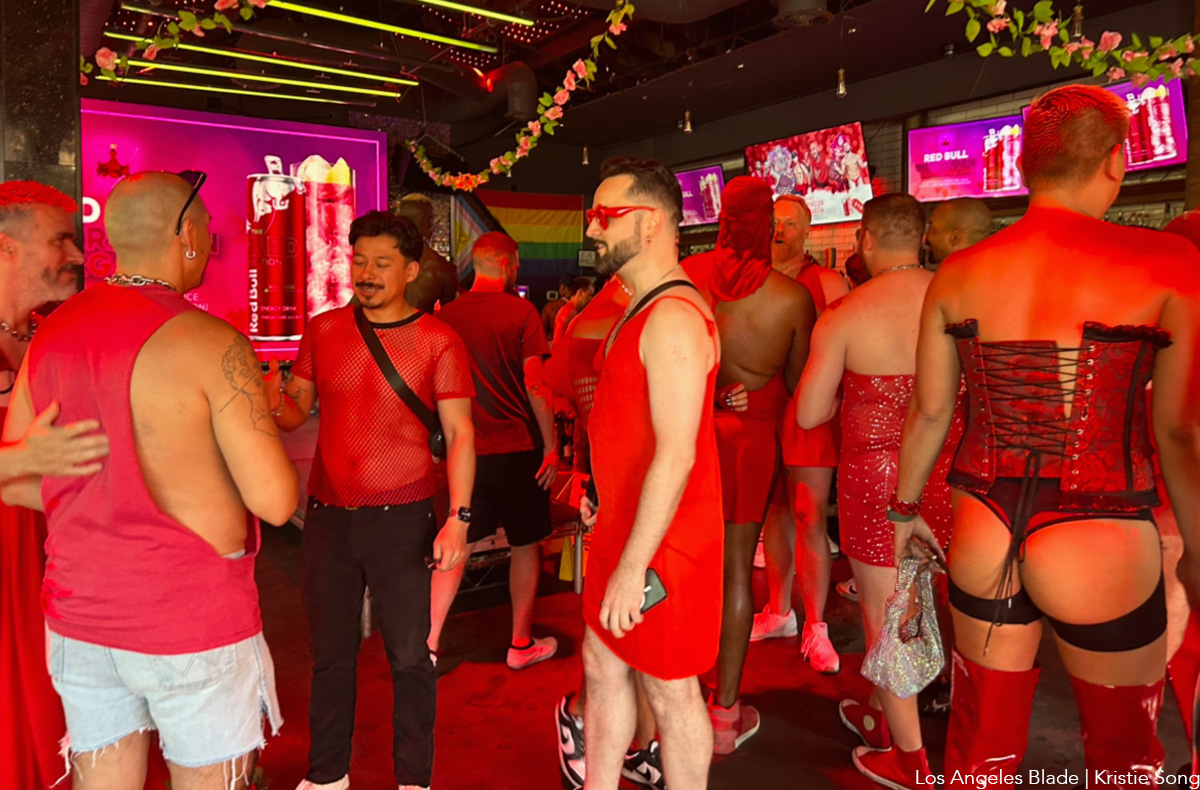
Red lights flooded the intimate space at Rocco’s WeHo Sunday night, as Anita Ward’s sultry 1979 disco hit “Ring My Bell” bewitched the dance floor. People clad in all-red leather outfits, dresses, mesh shirts, elegant gowns, and ruffled sleeves mingled and swayed their hips to the loud, thumping beat of funk-infused club classics. They were gathered together for West Hollywood’s annual Red Dress Day, a community fundraising event centering HIV/AIDS awareness.
Red Dress Day, also known as the Red Dress Party, is celebrated in cities across North America, and offers a space for new and longtime friends to commemorate the resilience of their communities, embrace queer joy, and raise funds for local organizations providing resources and services to individuals affected by HIV/AIDS.
At this year’s West Hollywood iteration, organizer and host Billy Francesca strutted in and out of the nightclub in tall black pumps, holding the end of a long red sequined dress in one hand and a microphone in the other. Throughout the evening, Francesca greeted attendees and urged them to purchase a red wristband, which would allow them access to community drink specials at Rocco’s and other nearby bars participating in the day’s festivities. The funds from these donations were to be donated to The Wall Las Memorias (TWLM), an organization dedicated to providing inclusive and culturally-competent HIV/AIDS care to underserved Latine communities.
TWLM offers HIV testing and counseling, peer-led support groups, consultations around health services and insurance coverage, as well as community programs and workshops around advocacy, health prevention and mental health destigmatization.
While excitement and dance was ripe in the air, there was also discontent behind-the-scenes.
As more and more people began to trickle into Rocco’s, only a few had purchased a red wristband. “Years ago, it was like: ‘Who needs what? How can we help? What can I do?’ Now it’s like pulling teeth,” Francesca told the Blade, frustrated at the lack of concrete donation support from attendees. “It’s disheartening, because the gay community wasn’t like this when I was coming up and out. People were just more there for each other.”
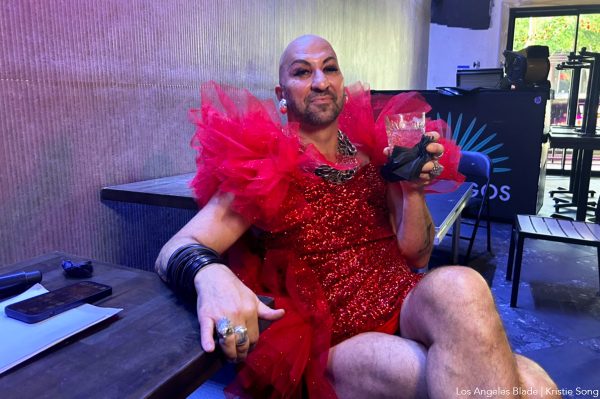
Francesca first began organizing for Red Dress Day in 2023, after the event had entered a hiatus through the pandemic. Moving forward, Francesca hopes to take a more background role in planning, stating that it’s become too much work for him. From rallying bars together and making sure drink specials were being properly distributed, to greeting attendees and making sure everything was running smoothly and on time, Francesca’s capacity has grown thin. “It just needs to be tightened up,” Francesa said, who is passing the gauntlet to Matthew Zaslow.
Zaslow, a Red Dress Day producer and founder of event planning agency Eventure Productions, is set to take on larger responsibilities for future Red Dress celebrations in West Hollywood. “I’m trying to make it a lot bigger,” Zaslow tells the Blade. “The big ones are San Diego and Palm Springs. So that’s my goal — in two or three years, to make it as big as that.”
As the event evolves, longtime attendees like Charlie McCrory are eager to continue to show up. It is an opportunity to band together in unabashed and free queer expression: to resist, to remember, and to hope. “We had to go through a lot to be here today,” McCrory told the Blade. “As a community, we’ve gone through a lot. And we need to remember that. We can’t forget it. And we need to relish, to celebrate.”
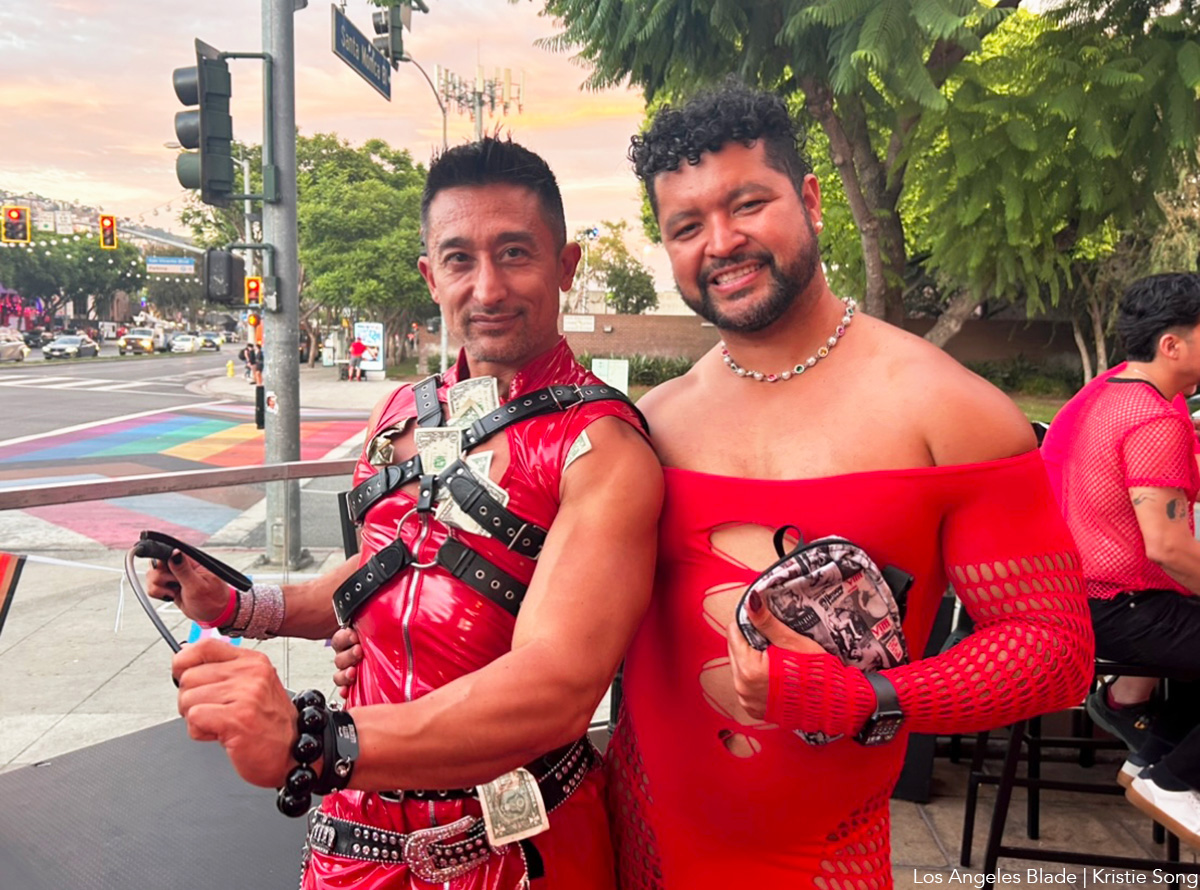
Los Angeles
The TransLatin@ Coalition campaigns for $20 million to support new housing initiative
If approved, the funds will go towards homelessness prevention
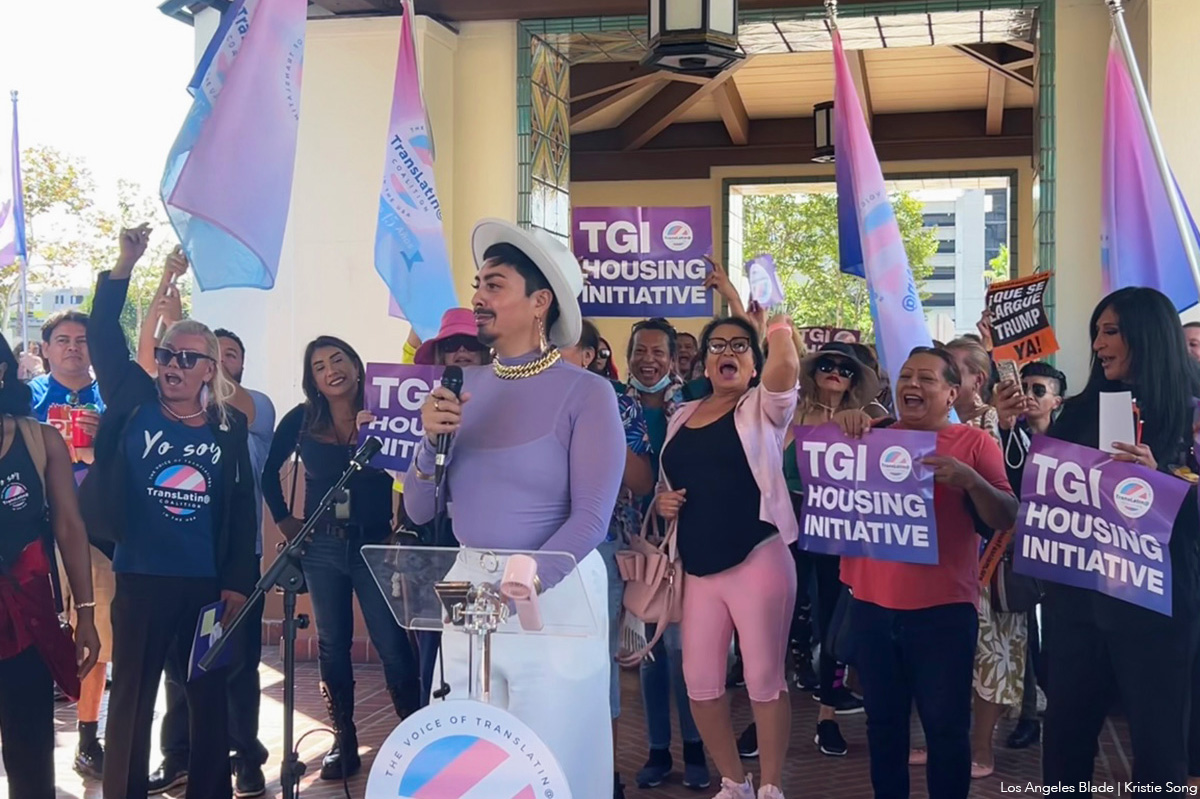
On Wednesday afternoon, over 50 people gathered in the heat outside the Metropolitan Water District. They waved large transgender pride flags and chanted at the top of their lungs: “Aquí está la resistencia trans!” Here is the trans resistance.
Leaders of the TransLatin@ Coalition (TLC), an organization formed by transgender, gender-expansive and intersex (TGI) Latine immigrants to support their fellow community members, led these jubilant calls for action at their press conference yesterday.
TLC organized this event to announce the launch of their new campaign, the TGI: Housing initiative. The group hopes to partner with the Los Angeles County Affordable Housing Solutions Agency (LACAHSA), an organization that was established in 2023 after the passing of SB 679: a bill aimed to increase affordable housing in the region.
What is TLC asking for? $20 million to invest into their communities. If approved, the funds would be allocated towards homelessness prevention resources like housing rental assistance and legal support clinics, specifically for TGI system-impacted individuals, seniors, transitional age youth, disabled community members and immigrants. “We are investing in people, not just programs,” said Queen Victoria Ortega at the press conference. Ortega is a chief visionary officer for the Connie Norman Transgender Empowerment Center.
“Housing is the foundation for opportunity,” Ortega continued. “When you are able to be in a safe, warm home, you’re able to take your medications. You’re able to take a respite. You’re able to think about the next step that you’re going to take. And really, why wouldn’t you want that for your neighbor? I end with saying: invest in trans lives.”
Authors of a June 2024 report published by the Williams Institute, a research center that informs public policy for LGBTQ+ communities, found that 47% of trans and nonbinary adults in the county live below 200% of the federal poverty level and face significant food insecurity and housing instability.
TLC is calling upon LACAHSA to utilize money from Measure A, a countywide half-cent sales tax that went into effect this April. The measure, meant to address the county’s homelessness crisis, generates over $1 billion annually and 33.75% of these funds are provided to LACAHSA. This amounts to over $380 million for the organization.
“Right now is the time for us to be invested in. We have a federal government who is trying to erase our existence,” said Bamby Salcedo, president and CEO of TLC, to the crowd. “That is why we’re calling on the LACAHSA board to commit to community engagement and partnership to ensure that this funding is community-led and that it is invested in all of us.”
Then, Salcedo led another chant. “Can we do it? When I say ‘People,’ you say ‘Power!’ People!” “Power!” Their voices carried like bells across the courtyard: a loud, clear and unbroken chorus.
As the press conference came to an end, TLC leaders encouraged community members to attend the LACAHSA board meeting happening right after, at 1 p.m. ChiChi Navarro, an active local advocate and a policy intern at TLC, explained how to make the most of their allotted minute during public comment. “Focus on your experiences,” said Navarro. “Focus on what you’ve gone through whenever you’ve tried to acquire housing. We understand that as a community, sometimes we’re affected simply for being who we are — and they need to listen to that. We are here in numbers so we won’t be silenced. Aquí está la resistencia trans!”
Many walked into the board room together at the Metropolitan Water District. Over ten community members took to the podium to share their personal experiences with homelessness, in both Spanish and English.
“As transgender, non-conforming and intersex individuals, we face unique challenges, especially those of us who are people of color, disabled or trans women who’ve experienced violence,” said Arianna Taylor, who was unhoused for three years. “$20 million allocated for TGI housing represents more than just funding. It represents hope, dignity and safety for people who, like me, have been forced to navigate a world of violence, stigma and exclusion.”
As Salcedo and her fellow TLC staff wait to hear more updates from LACAHSA, they will return to their work: empowering their community. “I’m really grateful that people are understanding that they have to advocate for themselves,” Salcedo told the Blade. “It is important for us to speak about what our needs are, and also try to find a solution. And please do come to our organization and see how we can support you.”
Mongolia
UN urges Mongolia to do more to protect LGBTQ+ rights
Discrimination, lack of legal recognition undermine progress
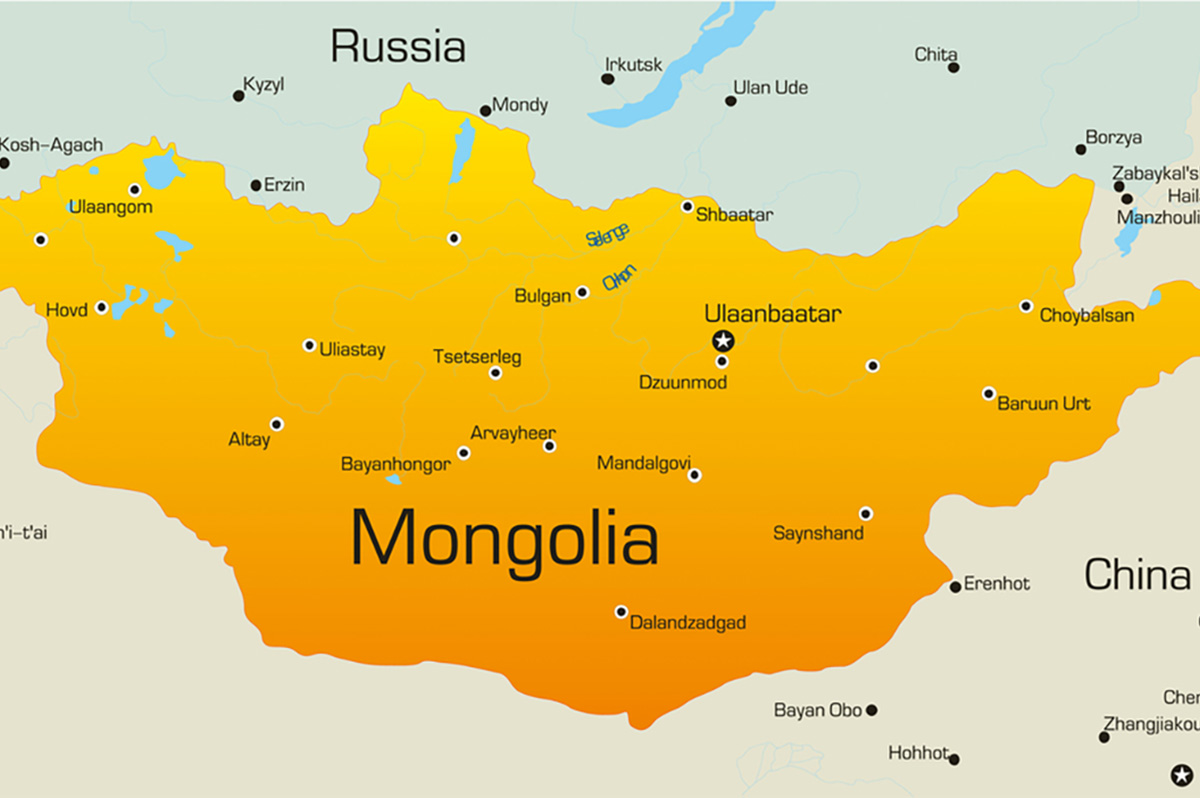
The U.N. earlier this year urged Mongolia to bolster protections for LGBTQ+ and intersex people, warning that entrenched discrimination and gaps in legal recognition continue to undermine recent progress.
In its Concluding Observations on the Fifth Periodic Report of Mongolia, the U.N. Human Rights Committee cited unreported attacks, bias in law enforcement, and the absence of rights for same-sex couples as barriers to equality in the country.
Mongolia has made measurable strides toward LGBTQ+ inclusion: decriminalizing consensual same-sex sexual relations, and outlawing discrimination based on sexual orientation and gender identity in its labor and criminal codes. Hate crime provisions allow for tougher penalties, and transgender people can amend legal documents to reflect their gender, though only after medical intervention. Mongolian law, however, stops short of recognizing same-sex marriages or civil unions, offers no status for nonbinary people, and provides limited protection for queer parents, leaving much of the community without full legal equality.
The Human Rights Committee also faulted Mongolia for the weak enforcement of its broader anti-discrimination framework, noting that few complaints reach the courts and prosecutions remain rare — a gap that limits remedies for LGBTQ+ people, despite legal protections on paper. The committee urged the government to widen the definition of discrimination, ease the burden of proof for victims, and raise public awareness about how to seek redress, alongside strengthening the reach and diversity of its National Human Rights Commission.
The U.N. Human Rights Committee has urged Mongolia to adopt sweeping anti-discrimination laws that protect people from bias in both public and private life, specifically including sexual orientation and gender identity. It also called for strong legal remedies and recommended that judges, prosecutors, and law enforcement officials receive proper training on discrimination, alongside broader efforts to raise public awareness about how victims can seek justice.
The report also called on Mongolia to intensify efforts to combat stereotypes and prejudice against LGBTQ+ and intersex people. It urged authorities to ensure that acts of discrimination and violence targeting them are thoroughly investigated, that perpetrators are prosecuted and, if convicted, receive appropriate penalties, and that victims are granted full reparations.
The committee further recommended guaranteeing freedom of peaceful assembly for LGBTQ+ and intersex people, including during the annual Equality Walk at Chinggis Square in Ulaanbaatar, the Mongolian capital, ensuring that any restrictions are applied fairly and in line with international standards. The report also highlighted the need for legislation that recognizes and protects same-sex couples.
The U.N. report also raised alarms over restrictions on peaceful assembly in Mongolia, citing accounts that authorities have curtailed demonstrations critical of the government as well as gatherings in support of LGBTQ+ and intersex rights. While acknowledging a draft revision of the 1994 law on demonstrations and assembly that would shift to a notification system, the committee warned a proposed requirement for police authorization to use main roads could undermine those reforms. It further expressed concern about reports of disproportionate force and arbitrary detentions during protests, and about a pending bill to amend the Criminal Code to impose prison sentences on those obstructing mining or other development projects, which could erode protections for the right to peaceful assembly.
Authorities on Dec. 4, 2024, arrested Naran Unurtsetseg, editor-in-chief of Zarig.mn, an independent news site, and held her for 68 days on charges that included contempt of court and spreading false information after she criticized judges and a prosecutor online. The arrest took place weeks after the General Judiciary Council urged an investigation into her remarks, and the site was briefly blocked ahead of her detention. The case has drawn sharp criticism from press freedom groups over the misuse of criminal defamation laws to stifle critical journalism in Mongolia.
Erdeneburen Dorjpurev, deputy director of the LGBT Center in Mongolia, told the Los Angeles Blade that in recent years her organization has handled several cases in which police officers themselves perpetrated prejudice, discrimination, abuse and harassment against LGBTQ+ people.
“These cases often make up around 30 percent of our referrals,” Dorjpurev noted.
She cited a 2022 incident in which officers allegedly forced their way into a gay couple’s home without a warrant, physically assaulted and verbally abused them, and mocked their sexual orientation. Dorjpurev said the officers also demanded access to the couple’s personal devices and, after obtaining it, circulated intimate videos among themselves and to others, deliberately humiliating the pair because of their identity.
“The survivor of this incident refrained from reporting this incident due to a fear of further harassment and abuse from the police,” Dorjpurev told the Blade. “The police officers in this incident, deliberately treated the couple with hostility, using derogatory terms in referring to their sexual and gender orientation. The police abused the position and power to humiliate the survivors by treating them inhumanely due to their own prejudice and discrimination against the LGBTQI+ community.”
Dorjpurev said the U.N. Human Rights Committee report underscored persistent mistreatment of LGBTQ+ people in Mongolia by police and healthcare providers. She noted incidents of discrimination and inhumane treatment “are still not being taken seriously and are often refused as official complaints,” leaving victims with little recourse. Dorjpurev added her organization urged authorities to expand scrutiny of human rights conditions for LGBTQ+ people in detention facilities, prisons, military bases, and other closed institutions, stressing the need to ensure those spaces are safe for sexual and gender minorities.
“While the Criminal Code includes provisions that sanction discrimination based on sexual orientation and gender identity, we still lack the proper tools to protect and support individuals. Even today, we still struggle in safe reporting, file complaints against any discriminatory acts,” Dorjpurev told the Blade. “This is due to the fact that individuals are still refused service from state services, still treated unfairly as well as still face harassment and discrimination from service providers. There is still a culture where an individual’s private information is disclosed without their consent, especially around their sexual orientation and gender identity. Further, service providers additionally utilize derogatory terms to shame and embarrass individuals, as well as repeatedly ask unnecessary, provoking questions around their gender and sexual orientation and identity.”
Dorjpurev further noted that, given this climate, most LGBTQ+ people in Mongolia are reluctant to seek help from state agencies or even private service providers, fearing further mistreatment or denial of their basic rights. Legal assistance is also scarce, she said, as few lawyers or other professionals focus on human rights and anti-discrimination cases.
Dorjpurev recalled a lawyer who collaborated with the LGBT Center on a case in 2019 faced harassment and discrimination simply for representing an LGBTQ+ client.
Dorjpurev highlighted that, to date, there has not been a single successfully resolved case of discrimination under Article 14.1 of the Criminal Code.
The LGBT Center in 2019 filed a complaint against a high-ranking state official who abused his authority to remove the organization’s posters from buses during Equality and Pride Days and posted anti-LGBTQ+ content on social media. Dorjpurev noted prosecutors at multiple levels rejected the case, despite many complaints.
“In Mongolia, despite not following ‘Western’ conversion therapy, we have our traditional Shamanic religion as well as Buddhism which still heavily influences our society,” she said.
“We have been referred to cases where community members have been subject to religious conversion — this mostly impacts those under the age of 18 where their parent or guardian believes they are suffering from a mental illness or other forms of health issue therefore forces them into meeting religious figures and shamans.” added Dorjpurev. “This is because the parent or the guardian often believe that they would be able to ‘pray away’ or ‘wash away’ their queer identity. These kinds of practices are often repeated on a daily basis having a severe impact on the mental wellbeing of their children; in some incidents these children are forced into having sexual intercourse with the opposite sex in order to ‘make them straight.’”
The LGBT Center in 2021 worked on the case of an gay 18-year-old who was told he would be burned with a hot stone and whipped if he did not become straight and gender conforming. Dorjpurev noted this man “was also referred to be sent to a psychiatrist where he was administered various different psyche-altering medications.”
Dorjpurev emphasized a key step for the Mongolian government is to demonstrate genuine commitment to LGBTQ+ and intersex rights and to transparently engage with civil society organizations. She noted that while various policies and laws have been introduced in the name of protecting LGBTQ+ and intersex people, these measures have largely excluded direct input from human rights defenders, limiting their effectiveness and accountability. Dorjpurev added these policies would have a stronger impact if developed in genuine consultation with civil society, ensuring concrete human rights provisions.
The LGBT Center, the National Human Rights Commission, and the Ulaanbaatar mayor’s office in 2024 co-organized a roundtable to discuss LGBTQ+ and intersex rights. Dorjpurev said this collaboration made the 2024 and 2025 Equality Marches possible.
She told the Blade that such examples demonstrate the benefits of consistent engagement with NGOs to build meaningful civic space and translate Mongolia’s commitment to equality into practice.
Dorjpurev called on international organizations, particularly the U.N., to continue supporting activists through in-person advocacy, technical assistance, and by improving both physical and language accessibility. She urged the U.N. to strengthen its role in monitoring the implementation of treaty body recommendations, working closely with the Resident Coordinator’s Office, and ensuring in-country teams engage directly with NGOs. Dorjpurev stressed that national-level dialogue must be inclusive, bringing together government agencies, civil society organizations, the U.N. Development Program, UNICEF, and other relevant U.N. bodies to guarantee meaningful participation and accountability.
“International NGOs also have a critical role to play,” said Dorjpurev, who specifically praised ILGA World, ILGA Asia, COC Nederland from the Netherlands, and other NGOs. “But more INGOs need to step up to support local civil society organizations in engaging with UN mechanisms.”
West Hollywood
“Will you own your deceit?” West Hollywood community members denounce city’s decision to lower flags for Charlie Kirk
Local residents packed last night’s city council meeting to voice their anger
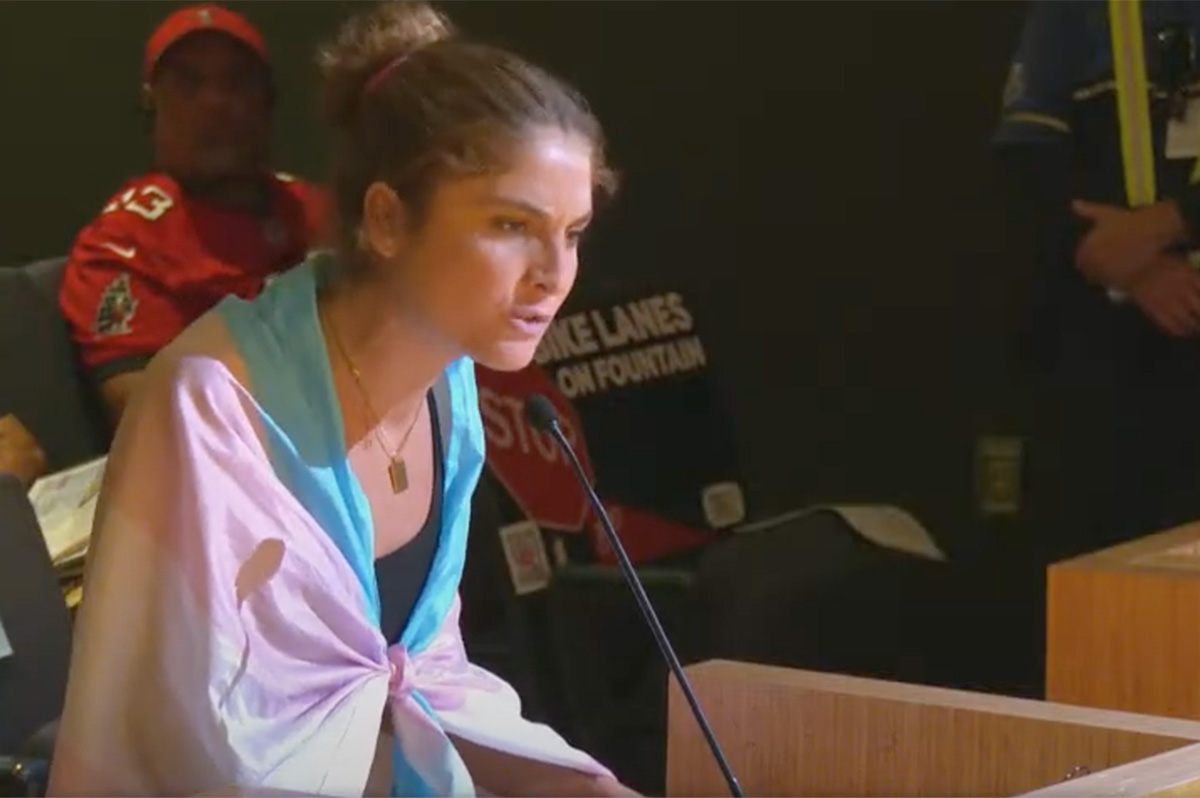
On Monday evening, West Hollywood residents packed the city’s council chambers ahead of the city council meeting. When the room opened up for public comment, several people loudly voiced their upset at the city’s decision to uphold President Trump’s recent proclamation, which ordered that U.S. flags at all public buildings and grounds be lowered to half-staff for four days following the death of Charlie Kirk.
Kirk was killed on Wednesday, September 10th, and was a prominent right-wing political activist, public speaker, and social media figure who gained popularity by participating in political debates with college students that were shared across YouTube, Instagram, and TikTok. He founded Turning Point USA in 2012, an organization dedicated to spreading conservative ideologies amongst young people. With over 18 million followers across Instagram and X, Kirk often took to the internet to share his anti-LBGTQ+ stances. He opposed same-sex marriage, called the need for gender affirming care a “mental disorder,” and supported the burning of Pride and Black Lives Matter flags.
When West Hollywood, a city that has long been home to much of the county’s LGBTQ+ communities, complied with the proclamation to honor Kirk’s death — community members were outraged.
Local resident Shannon Axe took the podium at last night’s meeting and called the decision “devastating.” She spoke of her own experience as a transgender woman, and how she is dedicated to supporting trans youth in an increasingly difficult social climate. “For me and for many others, these flags are not just fabric. They are a lifeline,” Axe continued, as applause reverberated around the room.
“They tell us ‘you are safe here. You are valued here. You belong here.’ To lower them in recognition of someone who has denied our humanity felt like erasing our dignity.”
Another community member, Nik Roybal, read from a poem they wrote in light of the city’s recent action. “Government, will you own your deceit? Government, will you witness our hurt, pain, anger, sadness? Why did you lower the flags for a terrorist, a white Christian nationalist?” Roybal recited. “This flag, this brown body, will not be lowered for a terrorist who wanted me and our siblings dead. Not in our name. To a city and a people that I love — not in our name.”
After public comment concluded, city manager David Wilson echoed a sentiment from the city’s official statement: that the City’s decision to comply with the presidential proclamation was not an endorsement of Kirk’s beliefs. Rather, it was following city protocol and United States Code.
But, Wilson clarified, that even traditional customs like this should be subject to more complex consideration if they present harm to local community members. “Thoughtful consideration should be taken to update this policy,” Wilson said. “I acknowledge that this decision has caused pain and frustration for many people in our community.”
Updates to the city’s flag policy will be discussed at the October 20 city council meeting.
Los Angeles
LGBTQ+ proponents respond to “devastating” Supreme Court ruling
Supreme Court allows “unlawful” immigration operations to continue
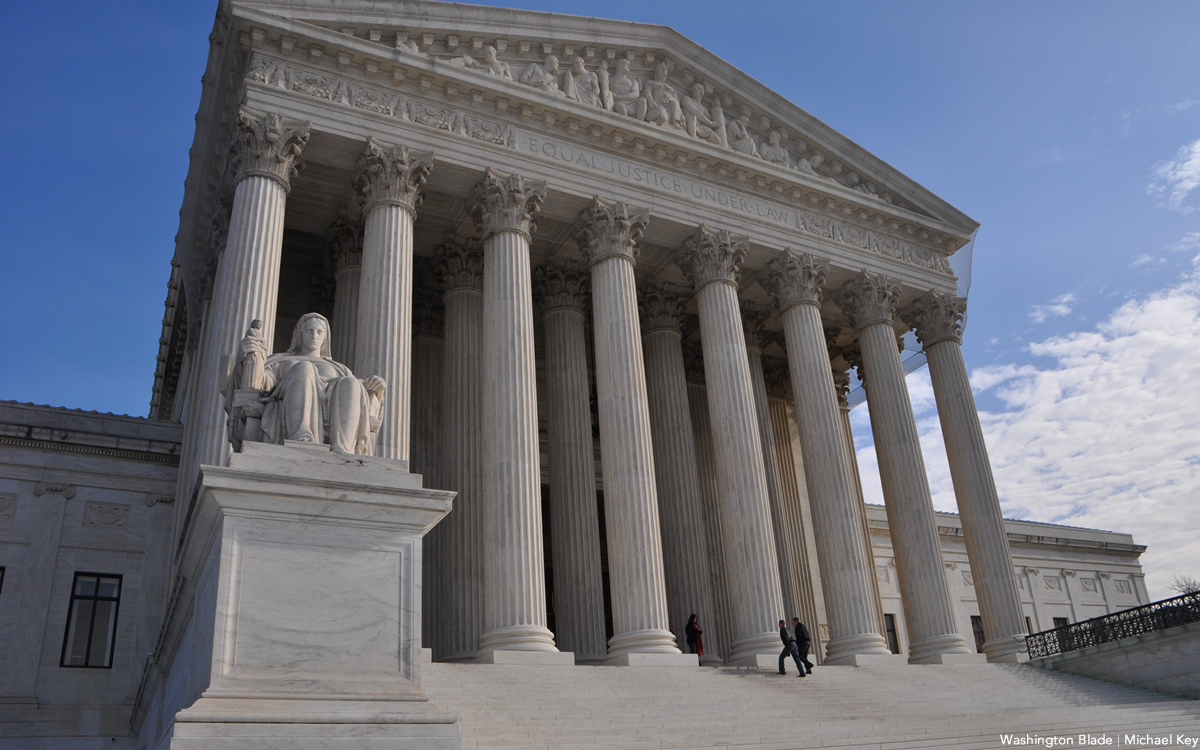
Since June, federal agencies began conducting mass immigration operations in Los Angeles and other major cities. For just as long, local residents, leaders, and advocacy groups have challenged their arrest and detainment practices, citing that their methods have violated constitutional rights.
In July, individual workers were joined by organizations like the Los Angeles Worker Center Network and the Coalition for Humane Immigrant Rights in filing a lawsuit against the Department of Homeland Security (DHS), arguing that federal agents had been illegally arresting people based on their perceived race, language and work — a violation of the Fourth Amendment.
As a result, two temporary restraining orders were issued, barring federal agents from stopping individuals without reasonable suspicion. DHS was also ordered to provide access to legal counsel for detainees.
On Monday, the Supreme Court voted to end this and granted the federal government’s application for a stay — or pause — of the temporary restraining orders. This will allow immigration operations to continue, and how they will proceed worries local leaders.
“This Supreme Court ruling strikes at the heart of who we are as a nation—allowing immigration agents to stop and detain people for little more than speaking Spanish or having brown skin,” wrote District 51 Assemblymember Rick Chavez Zbur, a longtime advocate for LGBTQ+ civil liberty. “This endangers our communities, undermines our democracy, and erodes constitutional rights.”
Some city officials hope to continue providing resources and support to affected community members. “As the raids were taking place across the region and in our own City, we took immediate action to ensure there are adequate resources to care for and support immigrants and their families,” wrote West Hollywood mayor Chelsea Byers. “This work will continue.”
West Hollywood was one of several Los Angeles county municipalities that filed a motion to intervene in the ongoing lawsuit, calling for the court to stop the federal government from conducting unlawful stops and searches that were based on assumed race and not on probable cause. It also activated its West Hollywood Responds program to raise awareness on available services like legal toolkits and training, consultations, access to free meals and more.
Local organizations are also extending their support. “The Supreme Court’s ruling is a devastating setback for Latine and immigrant communities, especially LGBTQ+ people who already face immense barriers to safety and belonging,” wrote Terra Russell-Slavin, the Los Angeles LGBT Center’s chief strategy officer. Russell-Slavin explained that the center has expanded free legal clinics both virtually and throughout the city to provide Know Your Rights workshops and other immigration and asylum support services.
“You are not alone,” Russell-Slavin continued. “And the Center will continue to stand with you.”
On September 24, the federal district court will hold a hearing to consider additional evidence and a possible preliminary injunction that will pause this most recent ruling.
Kristie Song reports for the Blade courtesy of the California Local News Fellowship
National
Military families challenge Trump ban on trans healthcare
Three military families are suing over Trump’s directive cutting transgender healthcare from military coverage
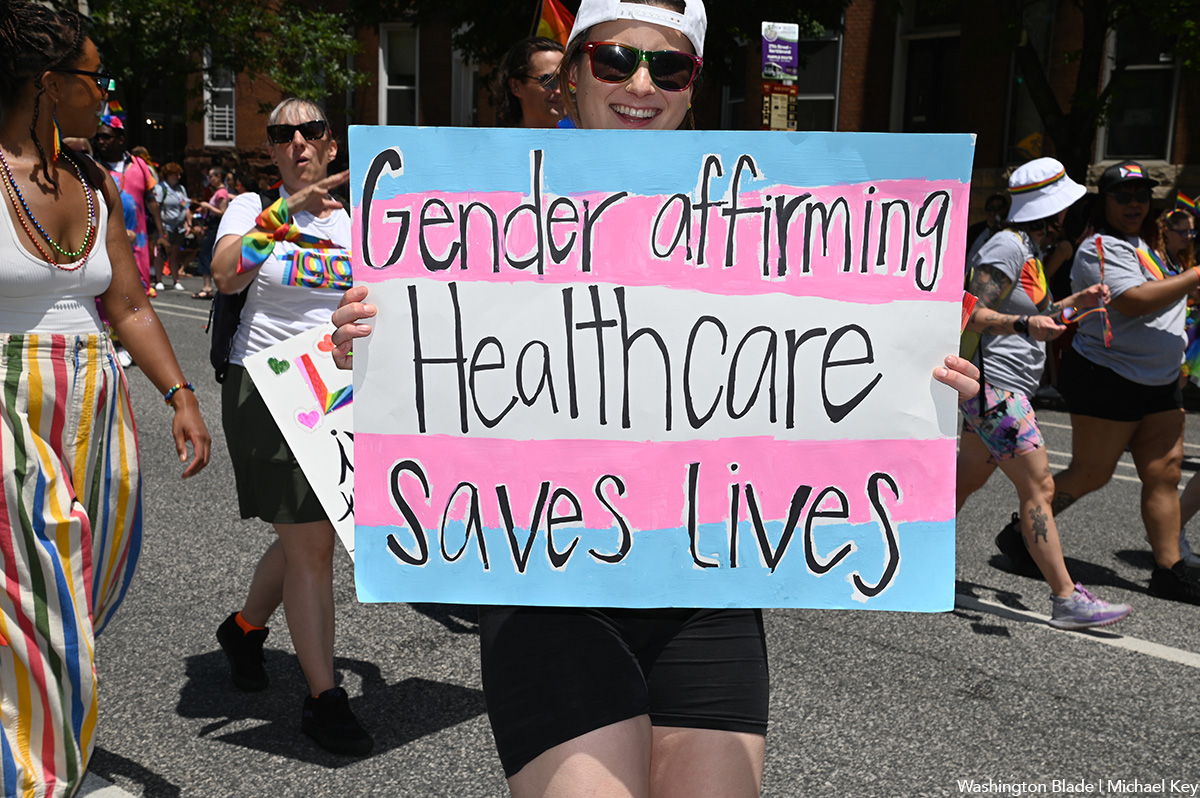
Three military families sued the Department of Defense on Monday after President Trump’s anti-transgender policies barred their transgender adolescent and adult children from accessing essential gender-affirming medical care.
The lawsuit, filed in the U.S. District Court for the District of Maryland, challenges the legality of the Trump administration’s decision to ban coverage of any transgender-related medical care under Department of Defense health insurance plans.
Under the new directive, military clinics and hospitals are prohibited from providing continuing care to transgender adolescent and adult children. It also prevents TRICARE, the military’s health insurance program, from covering the costs of gender-affirming care for both transgender youth and young adults, regardless of where that care is received.
A press release from the families’ attorney explained that the plaintiffs are proceeding under pseudonyms to protect their safety and privacy. They are represented by GLBTQ Legal Advocates & Defenders (GLAD Law), the National Center for Lesbian Rights (NCLR), Brown, Goldstein & Levy, LLP, and Keker, Van Nest & Peters LLP.
“This is a sweeping reversal of military health policy and a betrayal of military families who have sacrificed for our country,” said Sarah Austin, Staff Attorney at GLAD Law. “When a servicemember is deployed and focused on the mission they deserve to know their family is taken care of. This Administration has backtracked on that core promise and put servicemembers at risk of losing access to health care their children desperately need.”
“President Trump has illegally overstepped his authority by abruptly cutting off necessary medical care for military families,” said Shannon Minter, Legal Director at NCLR. “This lawless directive is part of a dangerous pattern of this administration ignoring legal requirements and abandoning our servicemembers.”
“President Trump’s Executive Order blocks military hospitals from giving transgender youth the care their doctors deem necessary and their parents have approved,” said Sharif Jacob, partner at Keker, Van Nest & Peters LLP. “Today we filed a lawsuit to put an end to his order, and the agency guidance implementing it.”
“This administration is unlawfully targeting military families by denying essential care to their transgender children,” said Liam Brown, an associate with Keker, Van Nest & Peters. “We will not stand by while those who serve are stripped of the ability to care for their families.”
-
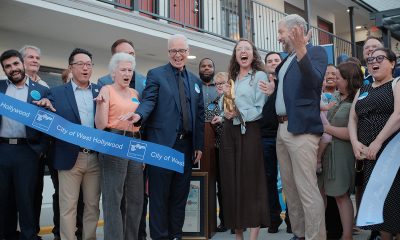
 West Hollywood3 days ago
West Hollywood3 days agoWest Hollywood officially welcomes a new transitional housing program
-

 Health5 days ago
Health5 days agoA safe space of healing: Inside Rainbow Hill Recovery with co-founder Joey Bachrach
-
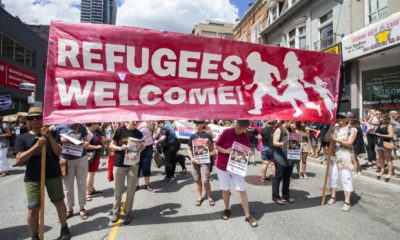
 LGBTQ+ RESOURCES1 day ago
LGBTQ+ RESOURCES1 day agoHope on the other side: How Rainbow Railroad rescues LGBTQI+ people at risk around the world
-
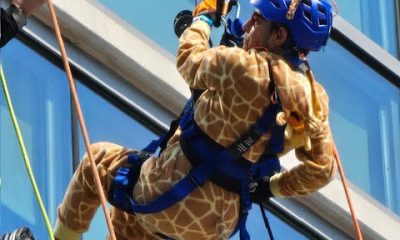
 Features4 days ago
Features4 days agoOver the Edge and back again: One woman’s journey through loss, grief, and healing through community
-

 Features5 days ago
Features5 days agoJeff Deguia and Lan Le are making sure queer AAPI liberation is no longer an “afterthought”
-
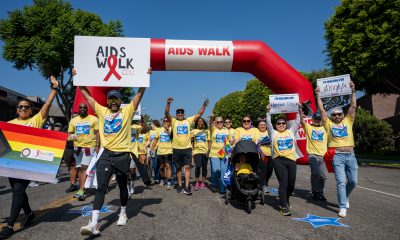
 AIDS and HIV2 days ago
AIDS and HIV2 days agoCommunity is the cure: AIDS Walk LA returns to fight HIV and funding cuts
-
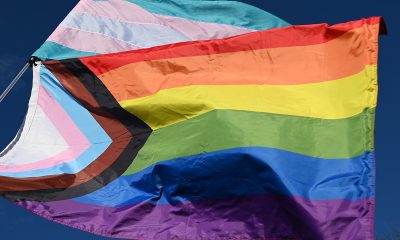
 COMMENTARY2 days ago
COMMENTARY2 days agoFrom rhetoric to persecution: When the State labels trans people as terrorists
-
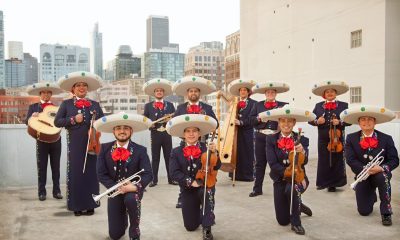
 a&e features3 days ago
a&e features3 days agoSitting Down with Mariachi Arcoiris, Los Angeles’ only LGBTQ+ mariachi
-

 Tarot Readings and Astrology3 days ago
Tarot Readings and Astrology3 days agoIntuitive Shana ushers in spooky season and the time when Spirit is speaking to us in October’s tarot reading
-

 Colombia2 days ago
Colombia2 days agoLuto en Antioquia y Colombia: asesinan a la activista trans y politóloga Victoria Strauss








